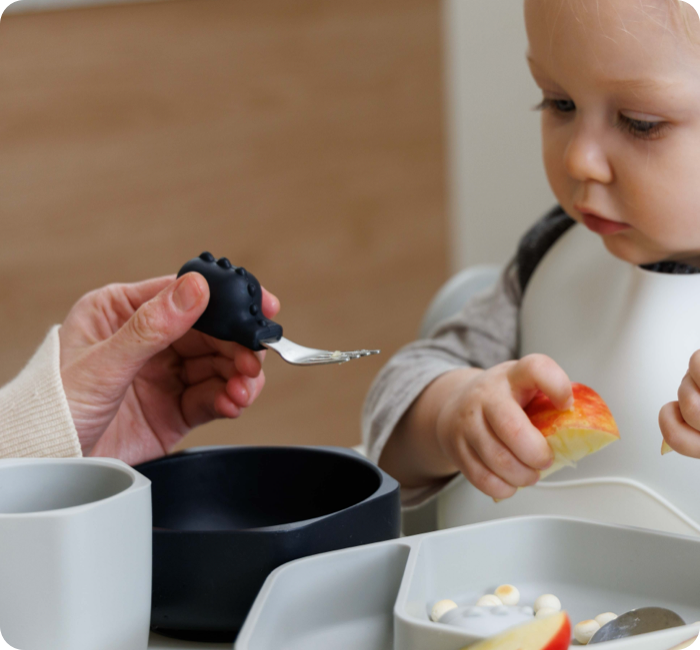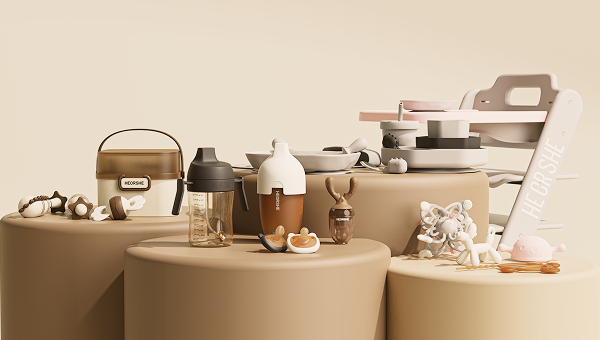Introducing solid foods is a major milestone in your baby’s development, and choosing the right utensils is a big part of that journey. Among the essentials are baby forks, infant forks, and infant fork and spoon sets—designed specifically to help your little one transition from being fed to self-feeding with ease and safety.
In this comprehensive guide, we’ll explore everything you need to know about baby forks: what makes them different from regular utensils, how to choose the best one, key features to look for, safety concerns, hygiene tips, and recommendations for top-rated infant utensils on the market.
Why Baby Forks Matter
Feeding is more than just a nutritional necessity; it is a learning experience. When your baby starts feeding themselves, it helps them develop fine motor skills, hand-eye coordination, and a sense of independence. Baby forks are critical tools in supporting this developmental stage.
Unlike adult forks, infant forks are designed to meet the specific needs of babies: safety, ease of use, and appropriate size. Giving your baby their own infant fork and spoon set shows that you value their growing autonomy. As they begin to grasp and use utensils, they also build self-confidence and coordination.
Furthermore, encouraging self-feeding can promote healthier eating habits. Babies who are allowed to explore their food and use baby forks at an early age often develop a better relationship with food. They become more open to trying new textures and flavors, which is critical for their long-term dietary preferences.
![]()
The Differences Between Baby Forks and Adult Forks
Adult forks are designed for fully developed motor skills and strong teeth. They are typically made of metal and have sharp, pointed tines. In contrast, baby forks and infant forks are carefully designed to ensure your baby's safety and comfort.
Key Differences Include:
Rounded Tines: These help prevent injuries inside the baby’s mouth. Most baby forks have tines that are either completely rounded or made from flexible silicone.
Soft Materials: Infant utensils often use BPA-free silicone, food-grade plastic, or stainless steel with safety coatings. These materials are gentle on gums and easy to chew.
Choke Guards: A unique safety feature, some baby forks include a barrier that prevents the utensil from going too far into the baby’s mouth.
Ergonomic Design: Infant utensils are smaller, lighter, and have textured or looped handles that help babies grip them better.
Bright Colors and Designs: Babies are attracted to fun colors and shapes, making them more likely to use their infant fork and spoon willingly.
When to Introduce an Infant Fork and Spoon Set
The right time to introduce a baby fork depends on your child’s developmental stage. Most experts suggest starting utensils around 6 months of age, which is when many babies begin trying solid foods. At this stage, spoons are usually used first for feeding purees.
By around 9 to 12 months, babies develop enough motor control to attempt using infant forks on their own. Starting with soft foods like steamed carrots or banana slices allows your baby to get used to using forks safely and effectively. Even if they don’t get it right immediately, repeated exposure builds skill and confidence.
Offering an infant fork and spoon at every meal also helps reinforce routines and teaches your baby that utensils are part of mealtime. Don’t worry if they use their hands along with the fork—this is part of the learning process.
Essential Features of a Good Baby Fork
Choosing the best baby fork means understanding which features provide the greatest benefit to your child. Here’s a breakdown:
1. Safety
The primary concern when choosing any baby product is safety. Your baby fork should be:
- BPA-free
- Phthalate-free
- Lead-free
- Non-toxic and food-safe
2. Soft, Rounded Tips
The tines of the fork should be rounded and flexible to prevent injury. These are ideal for gently poking soft foods without hurting your baby's delicate gums.
3. Easy-Grip Handles
Babies need utensils that they can hold comfortably. Look for forks with thick, non-slip, contoured handles that support different grasping styles.
4. Choke Guard
Some infant forks have a built-in guard to prevent babies from pushing the utensil too far into their mouths.
5. Dishwasher Safe
Cleanliness is key when feeding infants. A dishwasher-safe fork saves time and ensures thorough sanitization.
Types of Baby Forks and Infant Utensils
There are several types of baby forks, and each serves a specific purpose. Depending on your child’s age and feeding experience, some designs will be more effective than others.
1. Pre-Fork or Pre-Spoon Tools
These beginner tools are ideal for babies just starting solids. They don’t require complex motor skills and allow babies to dip and scoop without stabbing.
2. Silicone-Tipped Forks
Soft and pliable, these forks are gentle on gums and great for younger babies. They're safe to chew and easy to manipulate.
3. Stainless Steel Core with Silicone Handles
These forks combine the durability of metal with the comfort of a silicone grip. They’re ideal for older infants and toddlers transitioning to real cutlery.
4. All-Plastic Forks
Lightweight and easy to handle, plastic forks are great for travel and daycare. Just ensure they are certified food-safe.
How to Choose the Best Infant Fork and Spoon Set
With so many choices on the market, selecting the best infant fork and spoon set can be overwhelming. Follow these tips to narrow down your options:
Step 1: Match to Developmental Stage
Younger babies (6-9 months) do best with soft, flexible utensils. Older infants and toddlers can graduate to firmer, more functional forks.
Step 2: Choose High-Quality Materials
Prioritize safety with materials like food-grade silicone, BPA-free plastic, and stainless steel with rounded edges.
Step 3: Look for Ergonomic Design
Consider utensils that support your baby’s grasp. Chunky or loop-handled forks are ideal for little hands.
Step 4: Prioritize Sets
A matching infant fork and spoon set ensures consistency and ease of use. Babies learn faster when using tools that look and feel similar.
Step 5: Check Certifications
Look for standards like FDA approval or EN14372 (European Safety Standard for Baby Utensils).
Safety Tips for Using Infant Forks
Even with the best-designed utensils, safety comes down to how they are used. Here are tips to ensure safe and enjoyable mealtimes:
- Supervise Mealtime: Always keep an eye on your baby when they are using utensils.
- Avoid Sharp Edges: Never give your child adult forks.
- Regularly Inspect Utensils: Cracks or rough edges can harbor bacteria or cause injuries.
- Teach by Example: Show your child how to use the fork through demonstration and guided practice.
- Stick to Baby-Safe Foods: Avoid giving foods that are too hard to pierce or chew.
Hygiene and Maintenance Tips
Keeping baby forks clean and germ-free is essential. Here’s how to maintain them:
- Dishwasher Safe is Best: Look for utensils that can be cleaned thoroughly in the dishwasher.
- Use Baby-Safe Soap: If washing by hand, use a gentle, non-toxic soap and rinse well.
- Sterilize Occasionally: Some utensils can be sterilized in boiling water or a baby sterilizer.
- Store Properly: Use utensil cases or clean drawers to keep them dry and contamination-free.

Common FAQs About Baby Forks
Can a 6-month-old use a baby fork?
Yes, but mainly for exploration. At 6 months, most babies use spoons for purees and can begin learning fork-handling through play.
What is the best material for infant forks?
Food-grade silicone and rounded stainless steel are top choices. They are safe, non-toxic, and effective for feeding.
Do I need a separate infant fork and spoon set?
Yes. Each serves a unique purpose. Forks are better for solids; spoons are essential for liquids and purees.
Are baby forks safe for toddlers?
Absolutely. Many baby forks are designed for use up through toddlerhood. Choose sturdier materials as your child grows.
How many infant forks should I buy?
A minimum of 3-5 forks is ideal to have backups for daycare, outings, or when others are in the wash.
Conclusion
The journey to independent feeding starts with the right tools. Baby forks, infant forks, and thoughtfully designed infant fork and spoon sets help your child safely transition from purees to solids, from being fed to self-feeding. These tools are not just about convenience; they are about development, safety, and fostering a healthy relationship with food.
By investing in high-quality utensils and being mindful of your baby’s developmental needs, you empower them to learn, grow, and thrive—one bite at a time.


